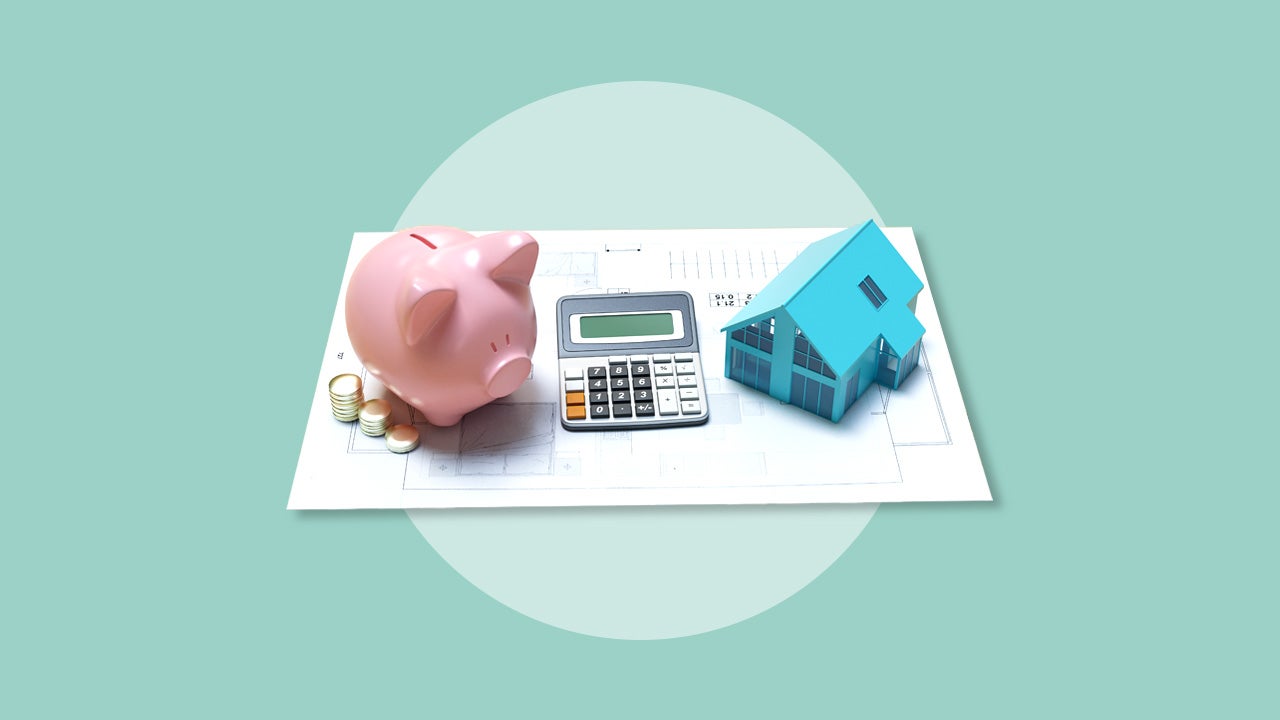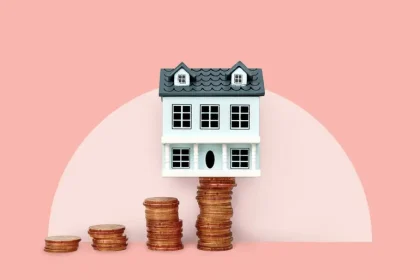Key takeaways
- Credit-building products, such as credit builder loans and secured credit cards, can help individuals with limited credit histories or poor credit rebuild their credit.
- Consider your options carefully and choose the best credit-building tool for your needs and financial situation.
- Over time, keeping an eye on your balances and making consistent on-time payments will help you build a stronger credit profile.
- While in the credit-building phase, becoming an authorized user or finding a cosigner may help you access lower rates.
If your credit score is low or if you don’t have a credit history, there are tools and products available to help boost your credit score or establish a stronger track record. From credit builder loans and secured credit cards to educational credit-building apps, there are a variety of choices. Each product works differently, however, so review your options carefully to choose the one that best suits your needs.
Credit-building products to help boost your score
Credit-building products give you a chance to prove to lenders you can manage debt. You typically borrow a small amount and make payments that are reported to credit bureaus to develop a credit history. For some borrowers, these products may be easier to get approved for than traditional credit cards or loans.
Despite how useful they can be, the interest rates on credit-building products are often higher with shorter repayment terms, which can make payments tough to handle. Some options may also require you to deposit money upfront or wait to access the credit until you’ve made several payments on time.
The most common credit-building products are credit-builder loans, small-dollar loans, secured credit cards and credit-building apps. Picking the right product could put you on the path to qualifying for low personal loan rates in the future.
Credit-builder loans
Credit-building loans require you to deposit either a portion or the full amount of your credit line, securing the loan before you can access any funds. If approved, the lender deposits the loan amount into a secured savings account. Each payment you make is reported to at least one of the three credit bureaus, which helps build your credit history and, ideally, your credit score.
Once you make a set number of payments, the lender may release some or all of the funds to you after subtracting any interest charges or fees. You’re usually limited to borrowing between $300 and $1,000, although some lenders may set limits as high as $3,000.
In most cases, the repayment term is between 12 and 36 months; however, some lenders offer terms of up to 60 months. Paying the loan off ahead of schedule can actually be counterproductive because it defeats the purpose of borrowing to build your payment history.
While you may save on interest by prepaying, you won’t benefit from the on-time payments being reported on your credit report, which is instrumental in improving your credit score. If you pay off the loan too quickly, then you’ll be reducing the opportunity to establish a positive payment history, which makes up 35 percent of your credit score.
Who it’s best for:
Credit-building loans are best if you have little to no credit history and don’t need the loan funds immediately.
Small personal loans
A small personal loan can help build your credit without making you wait for funding. Small-dollar loans must not exceed $2,500 and must also be reported to at least one credit bureau. Like other personal loans, they are repaid in installments, with no prepayment penalty if you choose to pay back your loan early.
You can get a small dollar loan at select national and community banks and local credit unions. Online lenders are also one source to comparison-shop for low rates and speedy funding.
The fees are typically charged as a flat rate based on the amount you borrow. Interest rates can be higher, especially if you need to turn to bad credit loans, but they can still help you to build a positive payment history.
A Community Development Financial Institution (CDFI) in your area may also offer small loans as an alternative for borrowers without access to other forms of credit. Small Dollar Loan Programs (SDLPs) incentivize certified CDFIs to provide a more affordable alternative to high-cost loans, payday lending and check-cashing services.
Who it’s best for:
Small-dollar loans are best suited for borrowers with little to no credit who need a smaller loan amount funded quickly, but want to avoid high-cost payday loans.
Secured credit cards
A secured credit card is a credit card for which your own money serves as collateral. You give the lender cash in the amount you want to secure, and the lender then grants you that much credit.
For example, to get a $200 secured credit card, you’d transfer $200 from your funds to the lender. The lender would then give you $200 worth of credit, which can be used just like a regular credit card.
Like credit-builder loans, you will need funds upfront to establish and secure the account. For this reason, if you are short on cash or need quick access to a larger credit line, this product may not be the best fit.
Interest rates and fees are often very high, but your payments and balance are reported to the credit bureaus, helping you to establish a payment history. However, secured credit cards are often easier to qualify for than regular credit cards because you effectively give the lender the cash that they then lend to you.
This can also help you improve or establish your credit utilization ratio, which measures how much of your available revolving credit is used. If you keep your credit card usage exceptionally low or pay the balance off completely each month, you can see a significant uptick in your credit scores.
Once you’ve used a secured credit card to prove your ability to make consistent, on-time payments, you may explore graduating to an unsecured card that offers lower rates and fees, a higher limit, better terms and the potential for rewards.
Who it’s best for:
Borrowers who have extra cash to set up a credit account and want to establish a history of paying on a revolving credit line.
Credit-building apps
Credit-building apps exist to help you build your credit. Some provide credit tracking services to help you become more aware of your score and behaviors, while others provide educational resources to help you build and maintain a strong credit profile.
Apps generally focus on specific areas of building and strengthening your credit, though many combine multiple capabilities.
- Credit reporting & monitoring services will provide information about your current credit score and offer insights on how to strengthen your credit profile.
- Credit-building lenders offer credit-builder and small-dollar loans directly through the app, often via an online lender.
- Billpay apps will help you to make timely bill payments, also reporting those payments to the credit bureaus to help build your credit.
While an app may sound like the easiest way of checking and strengthening your credit score, be aware that app developers are in the market to make a profit, too. Many apps charge a regular fee to use, and even with a free membership, you’ll be relinquishing your data to a third party for monitoring.
Who it’s best for:
Borrowers who are comfortable using mobile apps and those who are looking for a comprehensive approach to improving their credit.
Pros and cons of credit-building products
Just like every other financial tool, there are benefits and downsides to be aware of when it comes to credit-building products. Knowing the advantages and disadvantages can help you select the right product for your short- and long-term goals.
Pros
- Eligibility criteria is typically less strict than other forms of credit.
- May improve or build your credit score and history.
- Over time, may help you access lower interest rates.
Cons
- Upfront cash or a proven payment history is sometimes required for approval.
- Most products offer only small loan amounts or low credit limits.
- Short terms and high rates may make the payment difficult.
Best practices for building credit
- Pay your bills on time. Regardless of the type of credit-builder loan you borrow, your credit score will drop if you don’t make payments on time. Keep on top of them by scheduling reminders or using autopay.
- Keep your credit card balances low. Besides paying late, the fastest way to weaken your credit scores is to max out revolving debt like credit cards. Generally, avoid using more than 30 percent of your available credit. For example, if you can access $1,000 worth of total credit, don’t use more than $300 in a single billing cycle.
- Research alternative credit reporting options. You can add on-time household bills or subscription services you use regularly to your credit report to improve your score. For example, Experian Boost allows you to add up to two years of payment history for utility bills or streaming services to your credit report, which could help increase your scores.
- Find a cosigner. Some creditors allow you to add someone else’s credit and income as a cosigner to help you qualify for a new account. They’ll be on the hook for the debt if you can’t repay it, so make sure everyone understands the responsibilities before you choose this option.
- Ask to be an authorized user. Ask a parent or relative if you could be added as an authorized user on one of their existing accounts. This is a common way for teenagers or new adults to generate a credit score. Ensure you discuss boundaries and expectations for using the card to avoid misunderstandings, especially because mishandling the account will affect both of you.
Bottom line
For consumers looking to establish or repair their credit, there are several options for credit-building products available to help. Your financial situation and needs will help you to determine which is best based on your unique circumstances.
First, decide whether you have the funds upfront to establish a secured line of credit. If not, you will need to explore borrowing an unsecured credit line or a personal loan. Then, carefully compare rates, terms, and repayment options before committing to a product. Keep in mind that no matter what product you select, it will likely not be a long-term solution for your wallet — once you’ve built a strong track record, you can consider graduating to credit options that offer better rates and reward options.
Regardless of how you choose to build your credit, consistent and timely payments, along with low utilization rates, are key to seeing improvement over time.
Read the full article here
















